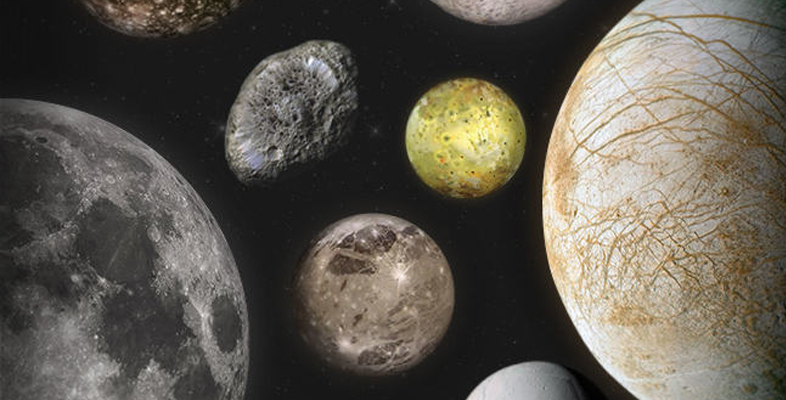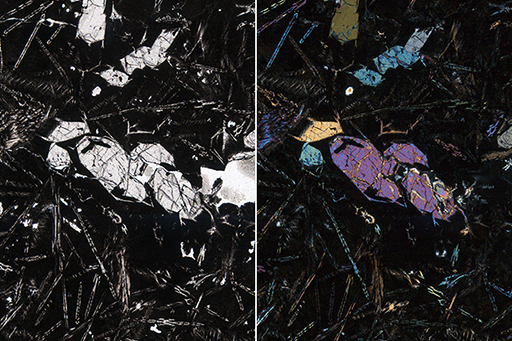2.2 Minerals under the microscope
The first step to understanding rocks on the surface of the Moon is recognising the different minerals and the mineral textures of those rocks. We know how these minerals form on Earth from our study of volcanoes, so we can extrapolate to understand how the rocks on the Moon were formed.
We can determine mineral structure and composition using a microscope to study thin sections of rock only 30 micrometres (0.03 mm) thick, which are almost transparent (1 micrometre is one-millionth of 1 metre). In thin sections, the crystals show a range of colours and textures, which allows them to be identified and categorised.
Rocks are examined under the microscope using polarised light, in other words light vibrating exclusively in one direction, as seen when you look through Polaroid sunglasses. (Polaroid is the name for a plastic used to polarise light.) The rocks can be observed using one polarising filter, or two. A microscope with two polarising filters, at right angles, blocks out all the light until a thin section of rock is introduced between the two polarisers. This changes the polarisation of the light hitting the second polariser and now some light gets through. The colours of the light are called birefringence colours and are diagnostic of the minerals. Some minerals and glass do not alter the polarisation of the light and remain black between crossed polars. Finally there are some minerals – mostly oxides and sulfides or metals such as iron and titanium – that appear black under any kind of light. Such minerals are called opaque since no light passes through them even in thin sections, but in such cases reflected light can reveal structural information.
Figure 15 was taken of one thin section of lunar mare basalt. The field of view is about 3 mm across. What can be seen is a piece of glass with minerals embedded in it. On the left you can see a range of different minerals and glass in plane-polarised light; on the right, the same view is shown with the thin section between crossed polars. Note some of the minerals are coloured in plane-polarised light and between crossed polars, whereas the glass is black in both views. This feature, combined with colours and variations as the sample is rotated, allows geologists to identify, characterise and discriminate minerals under the microscope.

